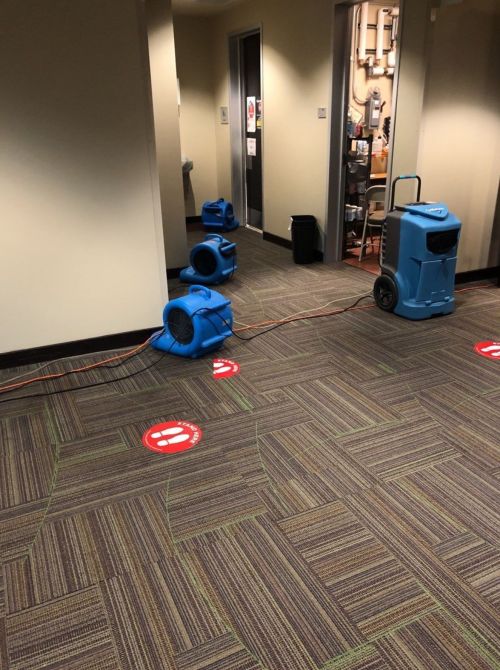How to Dry Out Carpet Fast After a Burst Pipe or Storm
08/20/2025

When a burst pipe, hurricane, or tropical storm strikes, one of the first things affected is your carpet. Water quickly seeps into carpet fibers and padding, creating a breeding ground for mold and bacteria. Acting fast is essential—not only to save your flooring but also to protect your home’s indoor air quality and prevent long-term damage.
In this guide, we’ll walk through the best methods to dry out carpet quickly and effectively, especially when disasters strike due to hurricanes, tropical storms, or heat-driven pipe expansion.
Why Carpet Dries Slowly After Storms or Burst Pipes
Carpet + Padding = Sponge Effect
- Both carpet fibers and the padding underneath absorb large amounts of water, which slows drying.
High Humidity from Hurricanes or Tropical Storms
- Moisture in the air prevents water from evaporating, trapping dampness in your home.
Heat-Driven Pipe Expansion
- In hot weather, expanding pipes may crack or burst, flooding carpeted areas with pressurized water.
Understanding these conditions helps you choose the right drying method.
Step 1: Act Fast and Stop the Source
-
Turn off the water supply immediately if a pipe burst.
-
Shut off electricity in the affected area to prevent electrical hazards.
-
If stormwater is the cause, seal off the area to stop additional intrusion.
Step 2: Remove Excess Water Immediately
-
Wet/Dry Vacuum: Much more effective than a standard household vacuum for water removal.
-
Absorb with Towels: Press down firmly to soak up standing water and replace towels as they saturate.
-
Professional Water Extractors: For severe flooding, rental equipment or professional services may be necessary.
Step 3: Boost Airflow and Circulation
-
Open windows and doors (if outside humidity is lower than indoors).
-
Use fans: Place them strategically to move dry air across the carpet.
-
Air movers or industrial fans: Recommended for faster drying in storm-hit areas.
Step 4: Control Humidity
After a hurricane or tropical storm, humidity skyrockets—making drying difficult. Fight back by:
-
Running a dehumidifier to pull moisture from the air.
-
Setting your air conditioner to Dry Mode if available.
-
Closing the room to keep drying power concentrated.
Step 5: Treat and Protect Against Mold
Mold can begin to grow within 24–48 hours after water exposure. To prevent it:
-
Apply an antimicrobial carpet spray or a mild vinegar solution.
-
Pull up carpet edges to allow padding and subfloor to dry.
-
Replace padding if it’s heavily saturated, since it rarely survives severe water damage.
Step 6: Call Professionals for Severe Damage
If your carpet is soaked after a hurricane, tropical storm, or major pipe burst, DIY methods may not be enough. Professional water restoration specialists bring:
-
High-powered drying equipment
-
Infrared moisture detection tools
-
Antimicrobial treatments to stop mold before it spreads
This can mean the difference between saving your carpet and replacing it entirely.
Key Takeaways
-
Move quickly—the first 24–48 hours are critical.
-
Hurricanes, tropical storms, and heat-driven burst pipes create unique drying challenges.
-
Drying requires a mix of extraction, airflow, humidity control, and mold prevention.
-
Don’t hesitate to call a professional to prevent costly long-term repairs.
Pro Tip: Always document damage with photos and contact your insurance provider—especially if flooding was caused by a storm or burst pipe.
Need Emergency Carpet Drying?
Water damage spreads quickly—don’t wait until mold sets in. If your carpet is soaked from a burst pipe, storm surge, or hurricane flooding, call CC Water Extraction at (210) 791-7177 for 24/7 emergency service. Fast action can save your carpets, your home, and your peace of mind.


